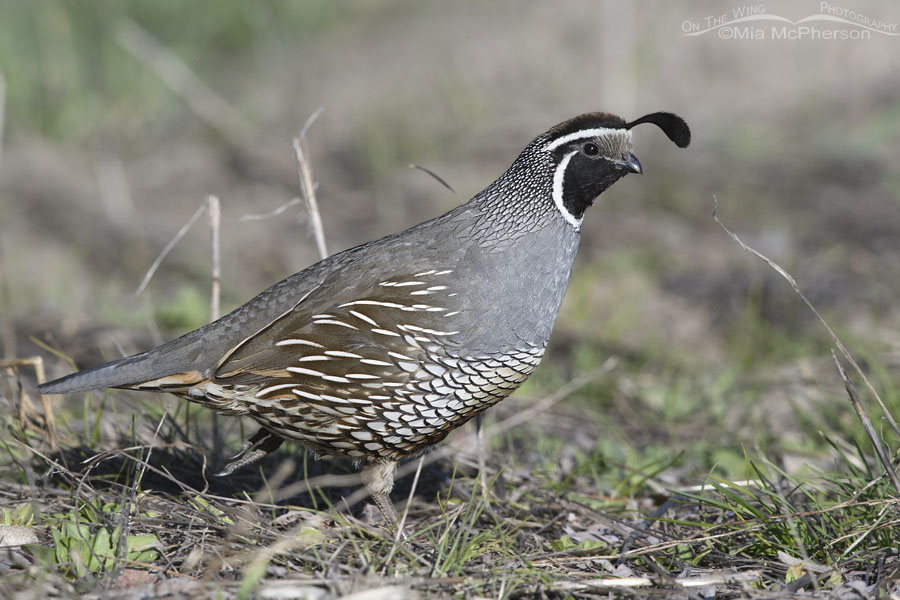It was windy yesterday morning so I went for a walk at a local park. Before I even turned off my Jeep I could hear several California Quail calling. I grabbed my camera and tripod and went to look for the quail.
 Spring California Quail male on the run – Nikon D500, tripod mounted, f7.1, 1/1600, ISO 640, Nikkor 500mm VR with 1.4x TC, natural light
Spring California Quail male on the run – Nikon D500, tripod mounted, f7.1, 1/1600, ISO 640, Nikkor 500mm VR with 1.4x TC, natural light
There were both female and male quail in an open area of the park. After I was able to get my tripod set up I took a few photos of this California Quail male as he ran in front of me. I had hoped to get more photos of the quail than I did but they were a little skittish. The wind might have had something to do with that.
California Quail are not native to Utah
However, this quail species has adapted quite well to living here. Since the warmer days of spring have arrived, I have been seeing and hearing more quail in my neighborhood. Soon there will be baby quail running around with the adults. I love seeing the tiny chicks of this species following the adults as they forage for food.
This time of the year I do have concerns about nesting quail and their chicks. They are at risk of being killed and eaten by outdoor cats and being hit by cars. When I see or hear quail I tend to drive a bit slower to reduce the chances of me hitting any of them.
I know that I will be hearing these quail more often now because it has finally gotten warm enough that I can open my windows during the day.
Life is good.
Mia
Click here to see more of my California Quail photos plus facts and information about this species.


Hi love them
What a fun morning in the park! I wish I were able to see California Quail where I am.
It makes me happy to have them year round in my yard. We get a lot of calls to help chicks when they fall down window wells and storm drains.
Even on screen this charmer lifts my spirits. Thank you.
Manage how you mow your fields to protect grassland birds, almost all on deep decline, from death:
mowing/haying dates are ranked in order of value to breeding grassland birds from highest to lowest:
1) After 20 August only.
2) Once before 20 May, and once after 20 August.
https://ny.audubon.org/conservation/managing-habitat-grassland-birds
Such a lovely sight!